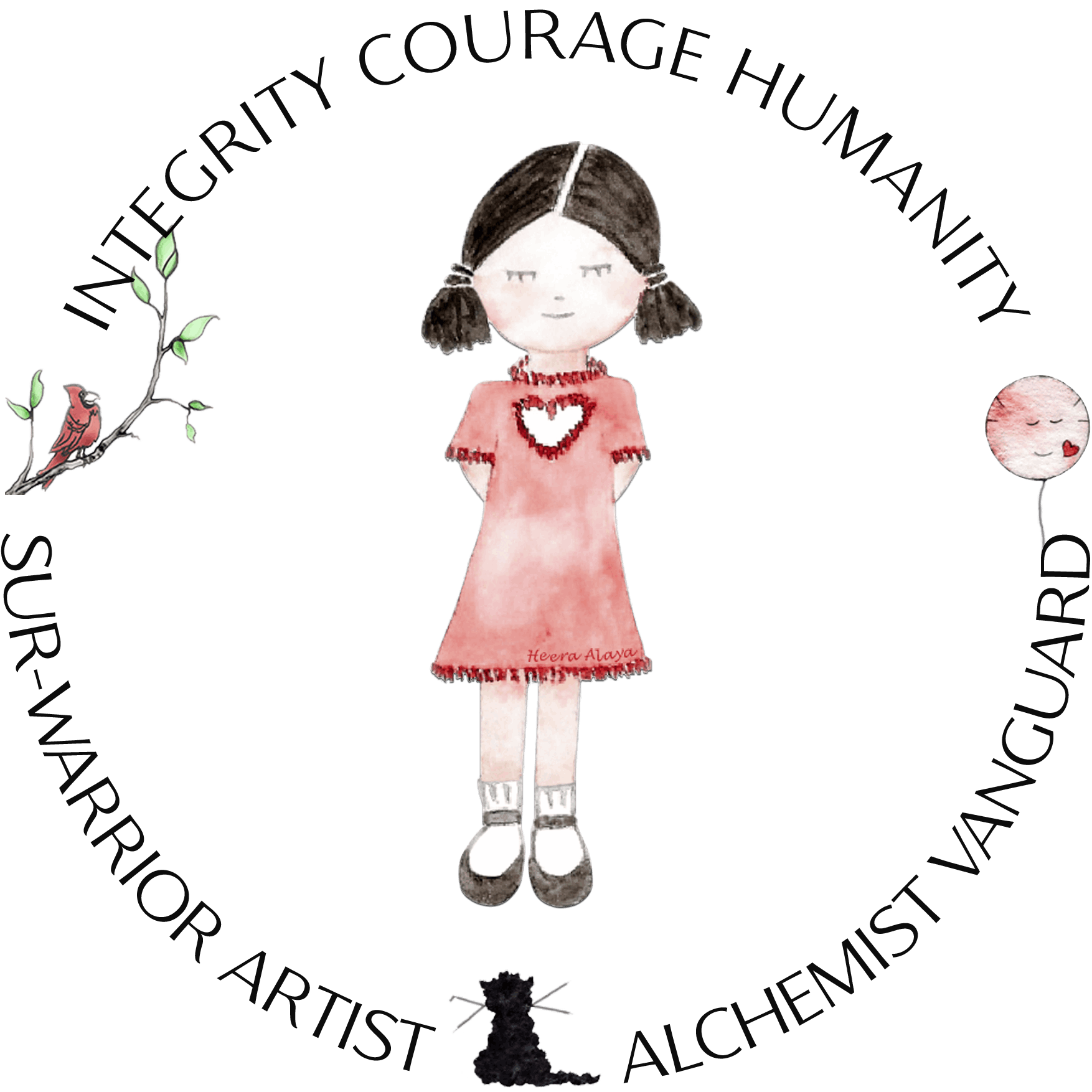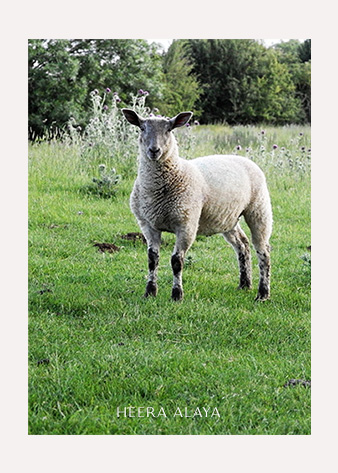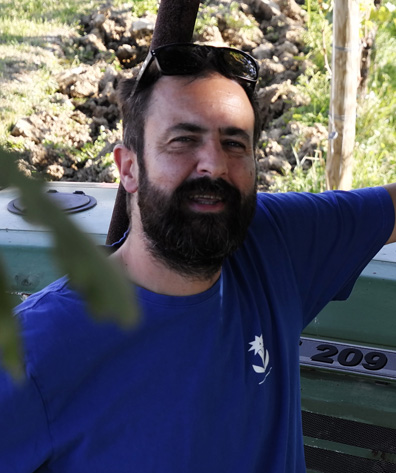
“We must have strength
when we are tired and see
a positive future when we see black.”
SIMONE and LEONARDO ABRAM
Organic Vintners, IT
March 8th, 2023
OPEN WINDOWS | In Conversation
Heera Alaya: What is the meaning of Podere il Macchione?
Simone Abram: “Podere” means farm. “Macchia,” translated in English, means bushes. “Il Macchione” is the augmentative of the word “macchia.”
Podere il Macchione is a boutique production. Where did your story begin?
Sì. Ours [Simone, his brother Leonardo and Simone’s wife Michaela] is a small vineyard. We originally come from the Italian Alps. My grandfather was a grower. One part of the family (my parents didn’t move because of health issues)—my brother, Michaela and me—came to Tuscany around 16 years ago to keep the farming tradition going. This region has an ancient wine-making tradition, and we are happy to have a positive balance. We are a drop contributing to this tradition, which is an honour but a challenge.
How do you follow your natural path?
Simone: My parents embraced natural medicines and organic farming. So, for us, it was natural to follow a specific philosophy. We didn’t use herbicides, pesticides or chemical products from the beginning. We arrived here [Podere il Macchione] to improve the soil’s quality and connect with our environment.
Our path is respect for nature and commitment to quality. To fully respect nature, we should be completely inoperative, which is impracticable. We have less impact on our land, with a focus and commitment to artisanal production.
How do you define quality wine?
You need two aspects for quality. First, we need an excellent terroir (The French are advanced in creating concepts and consciousness.), which is the relationship between a micro area’s physical, chemical and natural characteristics. Terroir comprises the vine, the exposure (north or south), the age of the vines, the soil composition, the latitude, and the altitude. Top-quality fruit from a top-quality terroir will produce a top-quality wine.
The second aspect is the top farming philosophy.
What is a good farming philosophy?
[A good farming philosophy] These practices help your soil be alive—working microorganisms, biodiversity, and organic matter.
How did you learn about farming philosophy?
Our [Simone, Leonardo and Michela] idea of farming comes from our journey. We share a strong sense of respect towards nature, and this concept developed vintage after vintage to improve the symbiosis with the environment and our work here.
What role do relationships play in small-scale viticulture?
The power of relationships is key—not for success, but for survival. Farming is tough because you have to follow nature’s time; if you miss it, you miss the magic. To follow this natural rhythm to our best—sometimes we miss the timing; it is human—we cannot do it alone.
Wine-making demands constant attention: organising seeds, growing plants, working the soil, pruning vines, harvesting, pouring the wine, bottling, labelling, preparing shipments, sorting out all the bureaucracy and more.
We must have strength when we are tired and see a positive future when we see black.
You need to have good relationships with those who manage the work. Our vineyard’s primary work is on the relationships between Leonardo, Michaela and me. We have joy, for sure, but also problems. Our focus is to maintain quality.

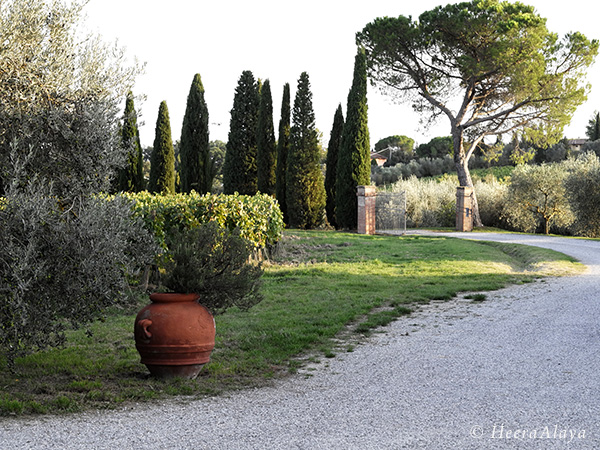
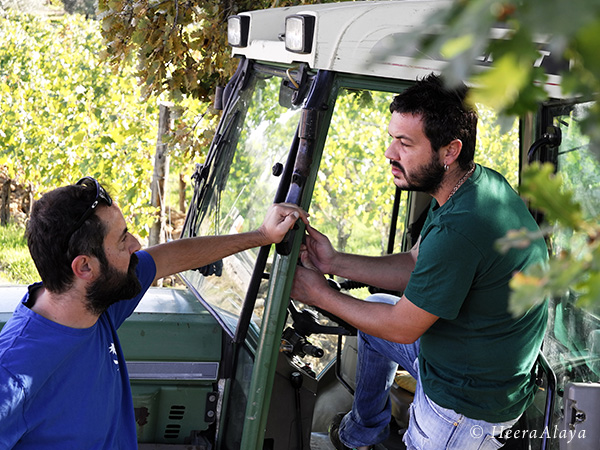
With so much to take care of, are you allowed to be unwell?
[Laughs] We are in God’s hands, and try not to think about it.
Do you have other farm employees?
Most artisanal vineyards operate on a small scale. Together with our full-time employee Ciprian, we [Simone, Leonardo and Michela] do the large majority of the work—from soil to bottle. And we have people who help us to harvest grapes.
[Simone leads me to the Vineyards]
Now [post harvest], it’s time to help bring nitrogen to the soil with nitrogen-fixing plants like beans.
Why is nitrogen beneficial for the soil?
Nitrogen is a basic nutrient for the plant’s life.
You green manure your vineyard?
Sì. Sì. [Simone picks up a chunk of soil] This is clay. Green manure helps to aerate the soil, to decompact the clay and make it softer. A plentiful winter sowing and well-managed mowing next spring will help the vineyards recover organic and inorganic substances.
Why does the soil appear chunky?
Heavy rains after harvest made it impossible to work with clay, so Leonardo opened up the soil to dry. Once dry, my brother will prepare the seed beds and cover the seeds. If it’s not too cold, the plants will start growing in the winter, and we will cut them in May.
[Simone reaches for the soil] Smell this.
The earth smells sweetish!! [I reach close to the soil and inhale deeply]
Sì. The soil smells of mushrooms.
[Showing me bone-like structures] You will find these big pieces.
Wow! These are fossils. This region was submerged underwater for millions of years.
Sì. This area was underwater during the Pliocene epoch (five million years ago). Eventually, the earth’s crust rose due to immense tectonic activity that lasted hundreds of thousands of years, which is why you can find all these marine fossils.
No wonder your vineyards are mineral-rich.
What causes the most damage to vines?
The main enemy of vines is hail; it is like death for us. We can find solutions for other factors but not for hail.
How do you navigate grape harvesting with weather unpredictability?
The main challenge currently is the heat, which is associated with drought. The farmer’s role is even more demanding—for healthy plants, we need to help our soil have many microorganisms. A healthy plant enhances its defence by living in a good environment. We make harvest decisions based on our palette, chemical analysis of the grapes, wine-making philosophy and experience.
Throughout the year, I take on a few guests (due to lack of time) and ask: “What is quality wine?” Visitors’ answers range from integrating tannins to rolling wine in the mouth; even advanced wine lovers need help defining quality. Quality is objective and not subjective.
The lack of expression could result from brainwashing messages from media and social media. We cannot express ourselves authentically when we surrender our minds to manipulation.
We can live surrounded by anything, but we have the choice to be aware. A Brazilian singer said that the only eye alive is the eye that observes.
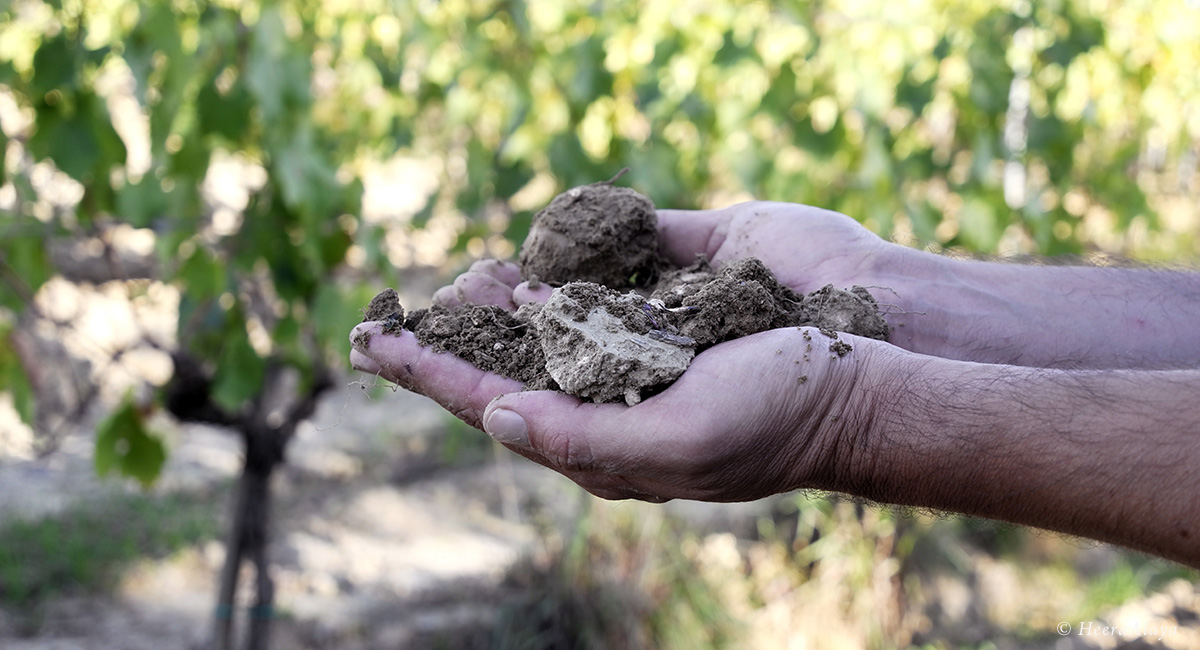

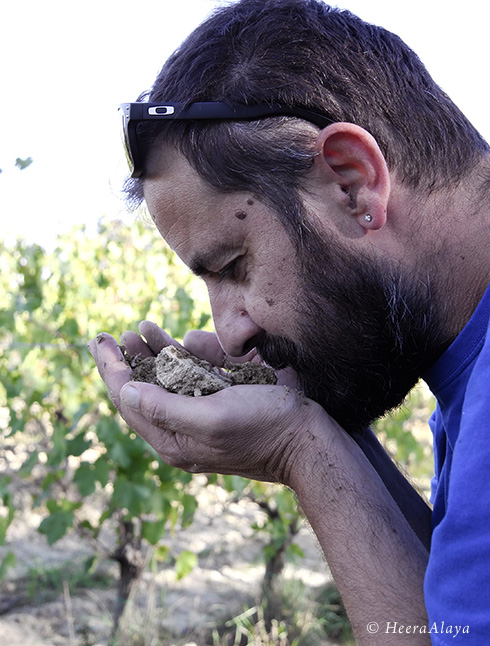
[We stroll through Simone’s olive grove]
Should wine comprise 70 percent Sangiovese [Red Italian wine grape varietal] to be classified as a Noble?
Sì. Our wines are 100% Sangiovese, the indigenous variety cultivated here for hundreds of years. I always say that Sangiovese is like a beautiful soul—you need a long, long time to get to know them, but when a person opens up, you can fully appreciate the person and enjoy all their facets. It is the same when you experience fine wines—you won’t settle for anything else.
Sometimes, it can be challenging to understand our product immediately, especially in its youth. Sangiovese takes a long time to get elegant as it is full of tannins, which give structure to the wine. Sangiovese must stay in the oak [barrels] for a long time. So a 2016 Reserve (we tasted) will age for 30 months in the oak and another 18 months in bottles.
Why does the wine stay in bottles for an extended period?
The transfer of wine from a barrel to a bottle is like shifting from a villa to an apartment—you need time to adjust.
Simone, you give interesting metaphors.
Grazie. This way, some people remember me after a long time.
At what point did you decide to make 100% Sangiovese wine?
The current rules for producing Vino Nobile di Montepulciano DOCG call for the wine to contain at least 70% Sangiovese (also called Prugnolo Gentile). The remaining 30% of Vino Nobile can comprise red and white grapes that are authorised by the local wine-governing body. But I’m not too fond of blended wine—I don’t understand the expression (especially of the plant), the variety, the soil and the environment. So instinctively, from the beginning, the decision was to make 100 percent Sangiovese wine.
[Leonardo, Simone’s younger brother, joins us.]
Ciao, buona sera.
Leonardo: How are you?
Bene. Bene. E tu?
Leonardo: Bene. Very busy.
[Simone pours me a taste of their Riserva, placing a glass of water beside the wine]. Grazie.
Simone: Prego.
When did you harvest this Sangiovese?
Leonardo: 2016.
[I smell and sip the Reserva] It’s richer and fuller than the 2017 Vino Noble.
Simone: Sì. Timing is crucial to find a good vineyard in a bottle. The more muscles wine has, the more time it will need in the barrel and the bottle to get harmonic.
Your 2017 Noble holds its own; I gifted several to your fellow Italians.
Simone: Did they enjoy the wine?
For sure, they were happy to receive quality wine.
Simone: How could you tell the Vino Noble is a quality wine?
I am not a wine connoisseur; plus, I seldom drink. I reckon my clean palette (a healthy-limited diet) guides me to quality—smoothness, fullness, gentleness and a quiet richness.
How long do you keep the wine in oak barrels to label it a Reserva?
Leonardo: A Reserva takes approximately six years to reach the market. 40 months of ageing in oak and then 18 months of extra fining in bottle
Simone: The quality of raw materials is essential, and the period the wine is in the oak makes the difference in the Reserva.
Leonardo: Exceptional raw materials enable us to produce unique vintages—we produce Riserva and another wine called Vino Nobile di Montepulciano “SILEO”. Before going into the bottle, SILEO ages in two small barrels for 50 months. We produce only a few litres when mother nature expresses its perfection.
Simone: 2016 was a blessed year.
What was so special about 2016?
Simone: Weather. God.
What is the meaning of SiLeo?
SiLeo is our flagship wine. SiLeo is the combination of Simone e Leonardo; in the old Latin language, it means to stay silent and contemplative. Ego Sileo means: I stay silent, contemplative.
You credit your wine’s quality to your grapes and soil. The quality speaks to your [Simone, Leonardo, and Michaela] collective essence—values, philosophy, investment, and passion.
Simone: Sì. Sì. Again, raw material is everything. From which environment is the fruit coming? How are plants treated? What do they eat? In what type of farming do you believe? Which products do you use? You and I and our respective partners who appreciate true artisanal quality can share this value.
With what food do you pair this Reserva?
Leonardo: I prefer fatty dishes [Simone laughs] or aged cheese.
Simone: I will go with dark chocolate.
Leonardo: Yeah, that [dark chocolate] will be good.
Simone: Actually, we pair the Reserva with chocolate salami [A typical cake from North Italy, cooked with cacao, biscuits and butter.]
Wine pairings often point to cheese and meat. How can vegans enjoy a glass of wine?
Simone: I prefer vegetarian and vegan food, so I understand your concern about vegan pairings. I come from the Alps, the mountains, which are poorer, unlike the central part of Italy, which is abundant in rich foods—olive oil, wild animals, and grains—that pair with wines.
Sangiovese pairs well with rich food because of its sapidity, which helps remove the fat from your mouth, preparing for your next bite.
Interesting.
Simone: Pita bread with hummus (Don’t put too much garlic.) makes a good wine pairing. Another good option is grilled veggie burgers with zucchini and peanuts. I will not pair Sangiovese with spicy food, like Indian food, because it alters your mouth, and you miss the taste.
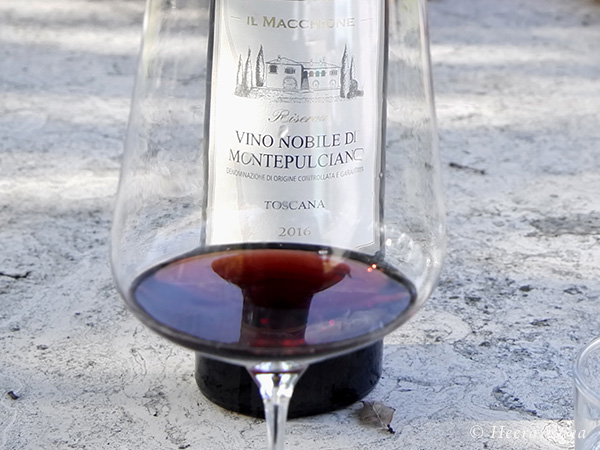
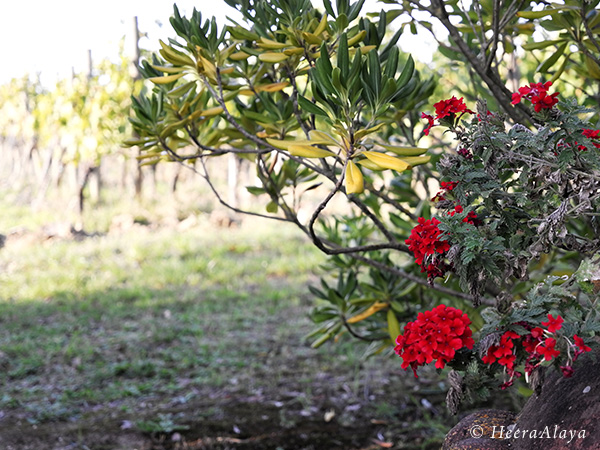
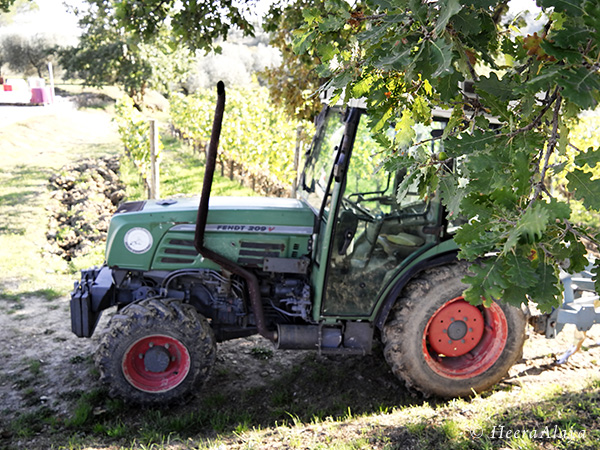
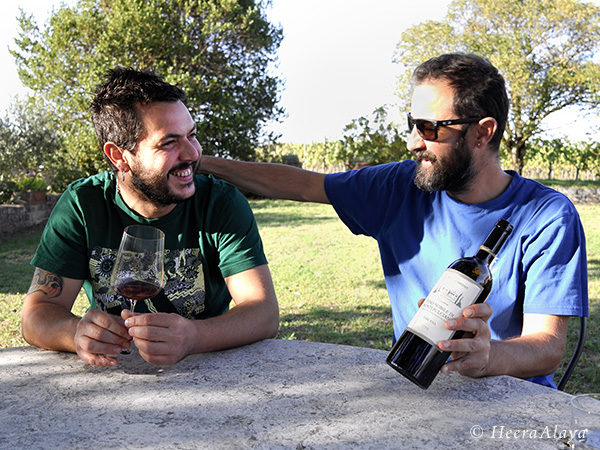
You speak of your focus on maintaining quality. How do you preserve your standard?
Simone: We must have values. Next, feel free to experiment. And be fully present and have patience—in farming, you will see the result in 10 to 15 years.
Leonardo: There are three factors to maintaining quality: information, studying and technique.
Simone: It’s essential to have a direct relationship with the soil. And to leave technology apart.
What do you mean by ‘leave technology apart’?
Simone: We make wine from instruments that are 50 years old. I will show you our cellar, which doesn’t have the technology.
[Leonardo departs. Simone and I head to the cellar.]
Earlier, you mentioned that ventilation is essential.
Sì. Ventilation is crucial. Our five acres of vineyards have four to five different terroirs. Our fields face different directions, so the plants catch the sun differently. Vines are at different altitudes—the higher part, for example, is well exposed to sun and ventilation, so generally, in normal conditions, the fruit is beautiful on the top, making for humid vintages. On the other hand, in a warm season without rain, the lower part of the hill, which is less exposed to the sun, gives more balanced fruit than the top.
[Simone walks around the cellar checking humongous barrels].
This is where the wine ages for 40 to 50 months. [Offering me a taste] These grapes were picked recently and will be ready in five years.
The colour is different [wine in the fermentation process versus the Reserva], almost a ruby. [On taking a sip]. It’s fresh, like fruit juice.
Esatto. This juice [must] is from the current harvest but with alcohol. [Giving me another sample] Take a sip of juice, roll it in your mouth and spit it outside.
[I follow Simone’s instructions] I taste bitter and sour.
Esatto. Bravissima.
What is the sour taste?
Souring is the acidity and the rough tannins.
[Simone offers me another taste of the wine in process] This wine has been in the barrel for longer and is from a different field.
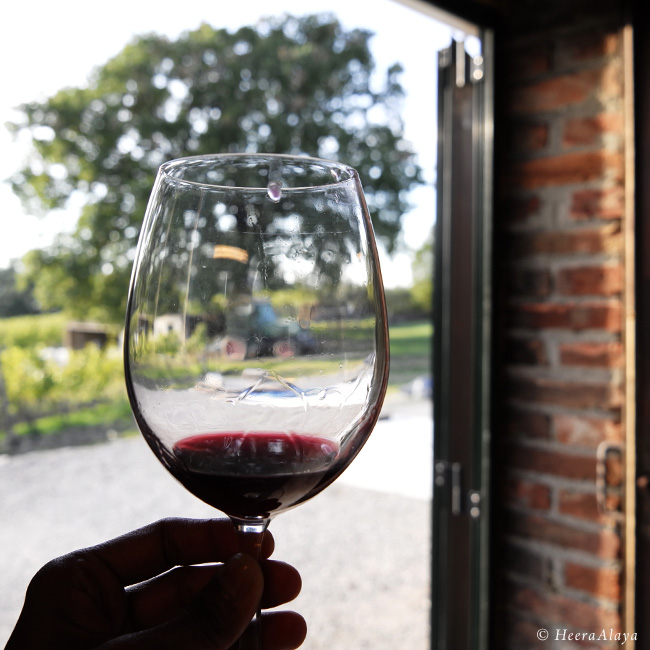
This wine is delicious!
[Simone climbs on the ladder and turns on the hoses]
This wine you are tasting is from the top of the hills. This Sangiovese is evolving well; the tannin is rounder, and the acidity is more integrated than the younger wine.
Why?
This is the result of fining in oak.
I don’t taste the sourness.
Esatto.
How do you transfer the contents from the vats to the oak barrels?
[Transfer contents] With pipes, which work well. Wealthy vintners take care of the transfer process with gravity—the fermentation cellar takes place on the top, and the cellar is in the basement.
Tell me about fermentation.
Fermentation is the process of converting grape sugar into alcohol. We make our mother yeast to transform sugar into alcohol.
How?
A week before harvest, we get the best grape from the vineyard and crush it by hand in a pan, adding wine from the previous year to help a single strong yeast called saccharomyces cerevisiae to start and win the battle against all other “bad” yeast. The saccharomyces cerevisiae plays a leading role during alcoholic fermentation (transforming the fruit’s sugar into alcohol).
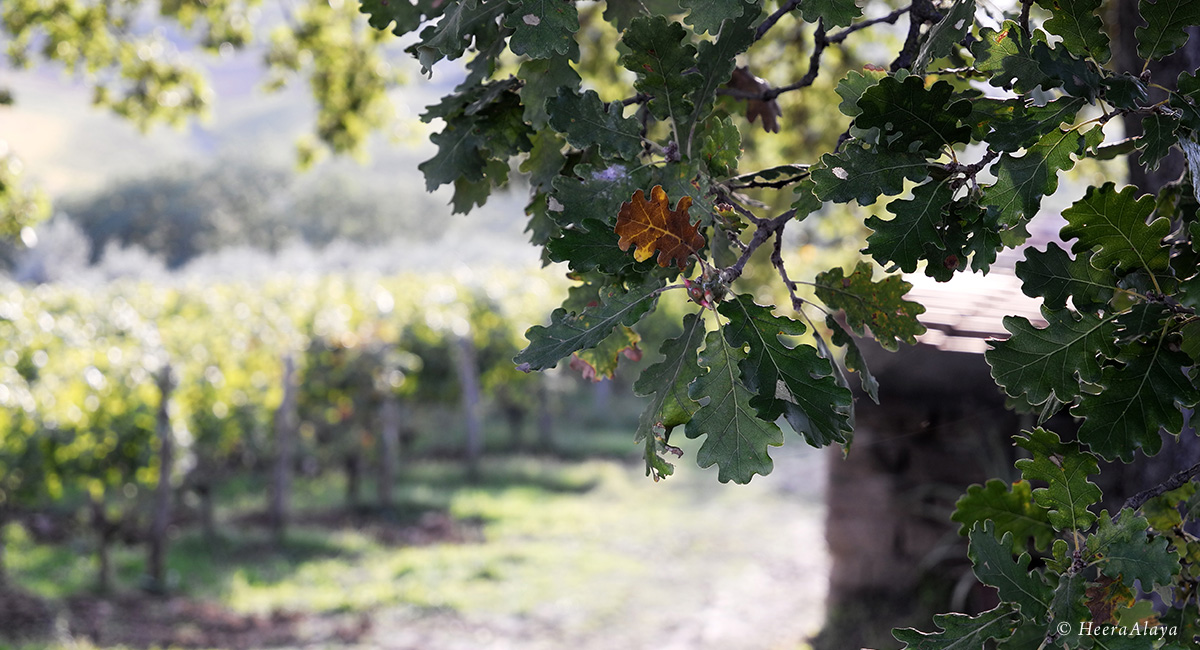
What is an indicator of your wines doing well in the market?
Some empirical things can bring the topic to the ground. You open a bottle and see how much the wine moves through your tasting. Suppose the wine doesn’t move when you open it and does not evolve, something may be missing.
Our wines are well known because they move a lot into the glass. This means wines need their own time in contact with oxygen to open up properly, and it depends on the type of wine, the vintage, when the wine was bottled, and other factors.
Do you sell your wines internationally?
Yes! We work very well locally and sell small quantities to our partners in the USA, Japan, North Europe and Australia.
You spoke about utopia as we walked through your vineyards—
Sì. It’s essential to preserve the energy of nature and the fruit’s power and bring it into the bottle. Some people are advanced in this technique; in our small experience, we are on the right path. We are entering a crucial phase where our vines are becoming superior—the fruit is getting brighter, and the wine shows a lot of life.
Learn more about Simone Abram and Leonardo Abram.
